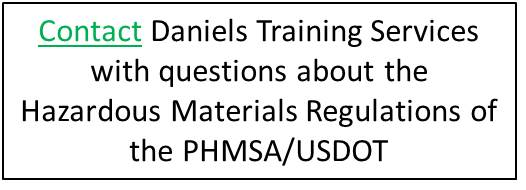In an earlier article I wrote about the two types of HazMat Incident Reports required by 49 CFR 171.15 & 171.16, respectively: Telephonic & Written. The article continued by revealing that the responsibility to submit a HazMat Incident Report will usually fall on the carrier and not the shipper since they are the ones most likely to be in “control” of a hazardous substance when it is in transportation. Therefore, a carrier of HazMat must be aware of these reporting requirements while a shipper of HazMat should be aware of them. In this article I’ll review the conditions that require the submittal of a written hazardous materials incident report (DOT Form 5800.1) per 49 CFR 171.16.
It’s worth re-stating here that the purpose of the HazMat Incident Report – whether it is Written or Telephonic – is not to summon help in the event of an emergency (that’s what 911 is for) or to inform the applicable authorities of a spill or release of a hazardous substance to the environment (that’s what the reporting requirements of the USEPA are for). Instead, the purpose of the HazMat Incident Report is to provide the PHMSA/USDOT with information about HazMat Incidents that they can use to improve hazardous material transportation safety.
Pursuant to 49 CFR 171.16 a person or entity having physical control of a hazardous material during its transportation (including loading, unloading, and temporary storage related to transportation) must submit a written report to the PHMSA/USDOT within 30 days after any of the following:
- An incident that required a telephonic notification per 49 CFR 171.15.
- An unintentional release (see definitions, below) of a HazMat.
- Any discharge of a hazardous waste.
- An undeclared hazardous material (see definitions, below) is discovered.
- A specification cargo tank with a capacity of ≥1,000 gallons containing any hazardous material suffers structural damage to the lading retention system or damage that requires repair to a system intended to protect the lading retention system, even if there is no release of hazardous material. Refer to Table 1, below for examples of reportable structural damage to a specification cargo tank.
- A battery or battery-powered device is the direct source of any of the following:
- Fire
- Violent rupture
- Explosion
- Dangerous evolution of heat
- An amount of heat sufficient to be dangerous to packaging or personal safety as evidenced by charring or scorching of packaging or other evidence.
Table 1: Examples of damage to a specification packaging that may or may not require reporting
Incident Report Required | No Incident Report Required |
| Damage to an outlet valve that affects seating and requires replacement. | Handle broken or knocked off valve – but otherwise undamaged |
| Serious damage that, if worse, could have resulted in the loss of the contents of the cargo tank. Damage to outlet lines that contain hazardous materials during transportation is in this category. | Serious damage that, even if worse, would not have resulted in the loss of the contents of the cargo tank. Damage to the outlet lines that are normally not charged during transportation is in this category |
| Cargo tank damage that requires professional inspection or recertification to ensure it is capable of meeting requirements. | Minor damage that obviously will not affect continuation of the cargo tank in service. |
| Cargo tank damage that requires immediate or subsequent repair because of questions about cargo tank integrity. | Cargo tank damage that requires repair for cosmetic reasons only. |
Definitions:
Undeclared hazardous material means a hazardous material that is: (1) Subject to any of the hazard communication requirements in subparts C (Shipping Papers), D (Marking), E (Labeling), and F (Placarding) of Part 172 of this subchapter, or an alternative marking requirement in Part 173 of this subchapter (such as §§ 173.4(a)(10) and 173.6(c)); and (2) offered for transportation in commerce without any visible indication to the person accepting the hazardous material for transportation that a hazardous material is present, on either an accompanying shipping document, or the outside of a transport vehicle, freight container, or package.
Unintentional release means the escape of a hazardous material from a package on an occasion not anticipated or planned. This includes releases resulting from collision, package failures, human error, criminal activity, negligence, improper packing, or unusual conditions such as the operation of pressure relief devices as a result of over-pressurization, overfill or fire exposure. It does not include releases, such as venting of packages, where allowed, and the operational discharge of contents from packages.

